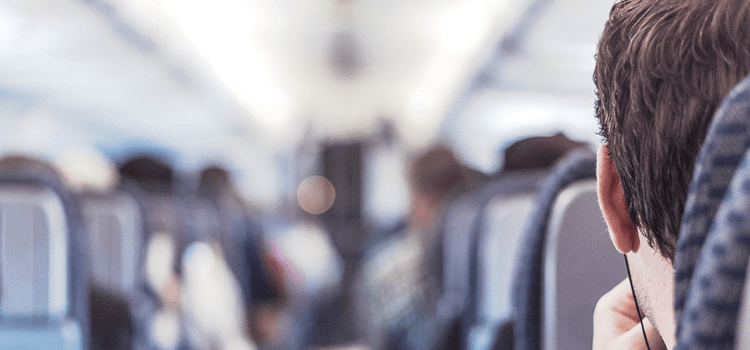Does it seem like the seats on Airplanes have been shrinking over the years? It’s not just your imagination; airlines have in fact been increasing the number of seats on their airplanes (thus reducing seat size) to increase revenue at the air traveler’s expense. Fortunately, the Senate has passed the FAA Reauthorization Act of 2018 (The Act), which means we may be seeing roomier seats or at the very least no further decrease in seat size. President Trump signed The Act on Friday, October 5th which funds the Federal Aviation Administration through 2023. The Act orders the FAA to set standards for the size of airline seats, part of what’s known as the Seat Egress in Air Travel (SEAT) Act, H.R. 1467.
SEAT requires the Federal Aviation Administration (FAA) to establish a minimum seat size and minimum distance between rows to protect the health and safety of airline passengers.
The average distance between rows of seats has decreased from 35 inches in the 1970s to about 30.5 inches today. The average width of an airline seat has also shrunk from 18 inches to roughly16.5 inches.
But many people are not expecting the airline industry to increase passengers’ personal space by much. It may make today’s compact seating the official minimum. On the bright side, there are still steps you can take to ensure your next flight is as comfy as possible.
Here are some comfort-boosting strategies you can implement on your next trip:
Pay Extra
This is obvious but you can always pay the extra $25 or more for the roomier economy seats, such as those in the exit rows. But remember that some airlines’ exit row seats don’t recline.
Also, if it is within your budget you may want to consider flying first-class. The price of first-class tickets within the United States continues to go down—at least when compared with flying in coach. Data gathered by the Wall Street Journal indicates that in 2015, the average first-class seat on a domestic flight cost about $575 more than its coach counterpart. Back in 2012, however, the cost difference between flying in first class versus coach was roughly $810. Thus, depending on your situation flying first class might be a better value.
Frequent Flyer
The frequent flyer program is an incentive program managed by an airline to reward customers for their loyalty. As a traveler, you earn “miles” for the miles that you fly on a particular airline.
Premium economy seats have more leg room, and that is one of the benefits of acquiring frequent flier status: You can usually get those seats at no extra charge.
Compare Airlines
When it comes to individual airlines, Jet Blue was recognized as the nation’s most comfortable airline in 2018 by WalletHub.com. Jet Blue’s fleet is more spacious than many of its competitors. Similarly, Delta announced in 2018 that its new Boeing 777 airplanes will have 18.5-inch-wide seats. To get a better idea of which airlines have the roomiest aircrafts you can visit SeatGuru.com which compares pitch and seat width for every airplane in a carrier’s fleet.
Stretch Out
Sitting in cramped seats for long periods of time may cause blood clots in your legs and back problems. The risk of blood clots or Deep vein thrombosis (DVT) is two to three times higher after four hours or longer on an airplane than on other forms of transportation, according to the World Health Organization. That’s due in part because the seating is so constraining. A bathroom break every 2-3 hours is considered a reasonable measure.
Bring a Cushion
Some Airline seats are not well-padded and can be uncomfortable if seated for extended periods of time. For older passengers this is especially true. Using a memory foam cushion can make a big difference, especially on long-haul flights. A financial cushion can also make you feel at ease, particularly when travelling to a far away destination.
Contact OC Estate & Elder Law at (954) 251-0332 or info@ocestatelawyers.com to learn how asset protection can help you safeguard your hard earned money.
















